Estimate of the global fleet and its regional distribution
The world had an estimated 4.1 million fishing vessels in 2020. This number has been on a downward trend in the last two decades, mainly driven by fleet reduction programmes in Europe and China, which started in 2000 and 2013, respectively, and were accounted for in a recent revision of FAO fleet data. The global fleet size was reduced by just under 10 percent between 2015 and 2020 and by just under 4 percent between 2019 and 2020. Asia hosts the world’s largest fishing fleet, estimated at 2.68 million vessels or about two-thirds of the global total in 2020 (Figure 27). This proportion fell by 8 percent between 2015 and 2020. Africa’s fleet has been increasing relative to the rest of the world, and now comprises 23.5 percent of the world’s fishing vessels, up 10 percent from 2015. The Americas now account for under 9 percent of the world’s fleet, down 1.5 percent from 2015. Europe and Oceania have retained a stable share of 2 percent and less than 1 percent, respectively, of the world’s total.
FIGURE 27DISTRIBUTION OF THE WORLD’S FISHING VESSELS BY CONTINENT, 2020
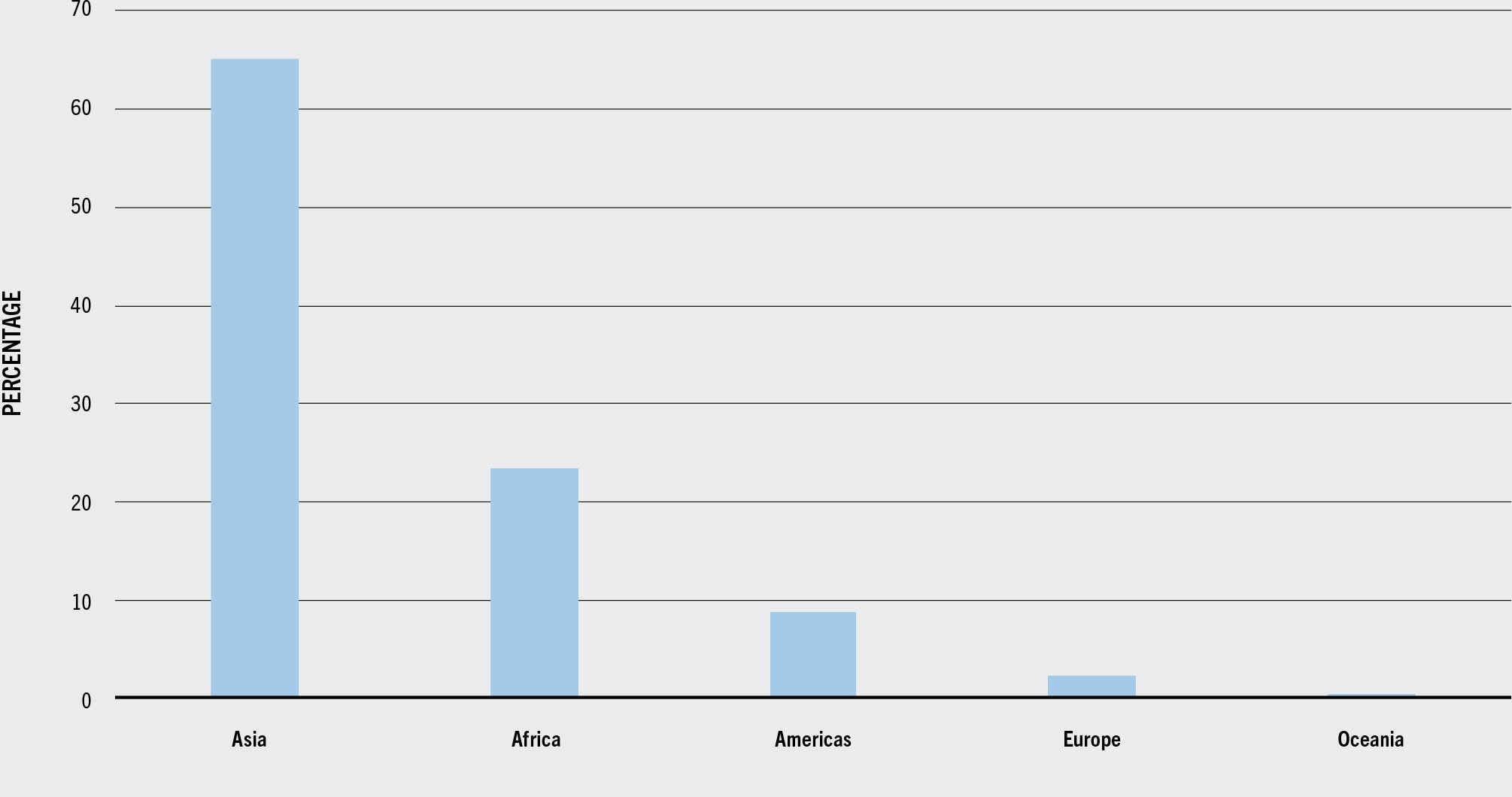
At an estimated 564 000 vessels, China has the world’s largest fishing fleet. This fleet is being scaled down and has been reduced by about 47 percent since 2013, when it totalled 1 072 000 vessels. This is motivated by the long-stated objective of reducing the size of the Chinese fishing sector (FAO, 2022a). The European Union, whose fleet totalled about 74 000 vessels in 2020 – a 28 percent reduction compared with 2000 – has implemented similar programmes through its common fisheries policy for the past two decades. Figure 28 and Figure 29 illustrate these changes in fleet sizes for China and the European Union. However, reductions in fleet size alone do not necessarily guarantee more sustainable outcomes, since changes in fishing efficiency can offset the sustainability gains of fleet reductions, as reported by Di Cintio et al. (2022) in Italy. A trend towards larger, more powerful vessels (Box 5) and more efficient fishing gears thus has the potential to jeopardize the sustainability of fishing, notwithstanding a decreasing number of vessels.
FIGURE 28FISHING FLEET SIZE BY MOTORIZATION STATUS, CHINA, 2000–2020
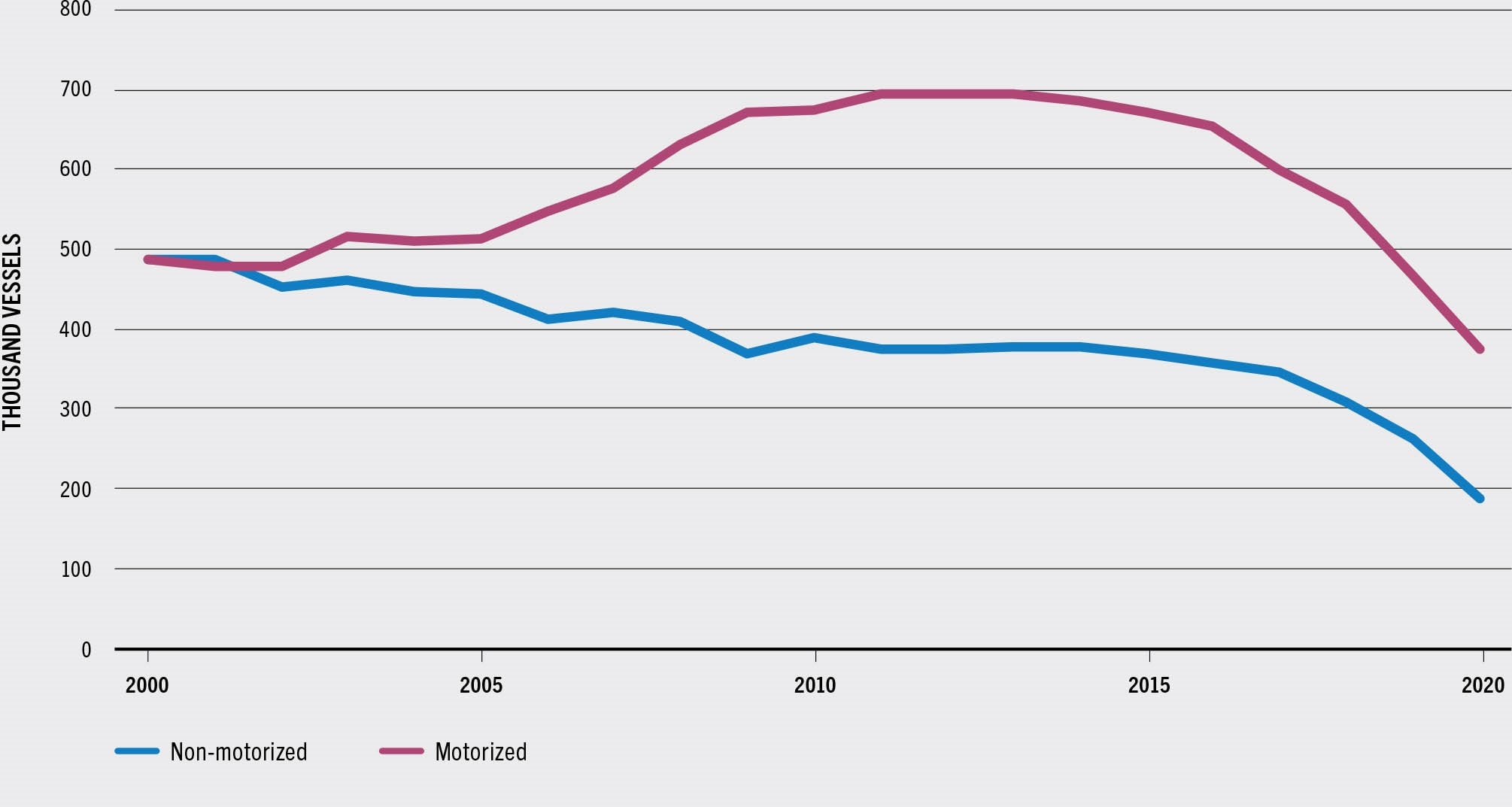
FIGURE 29FISHING FLEET SIZE BY MOTORIZATION STATUS, EU-27, 2000–2020
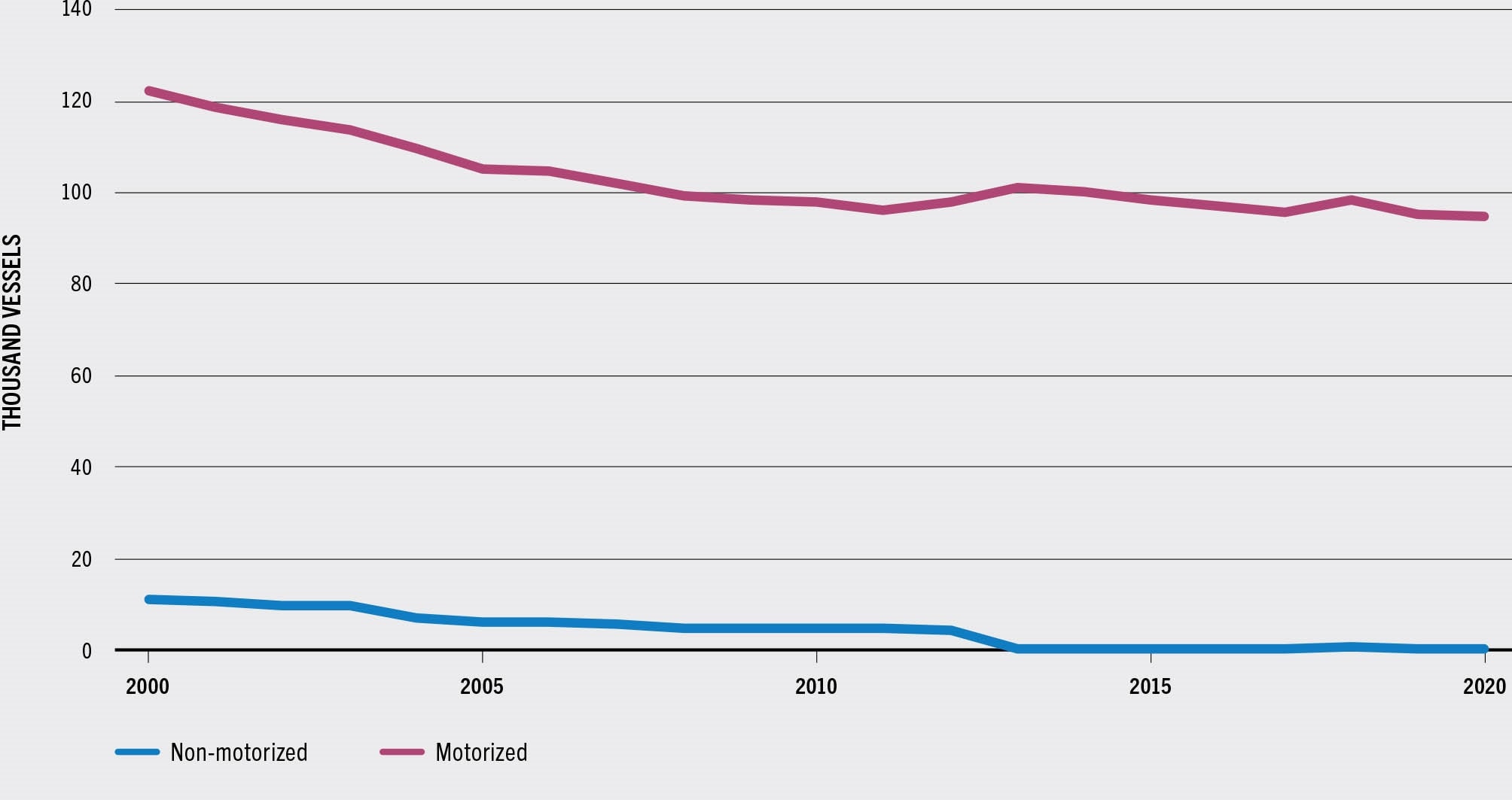
In terms of fleet motorization, the world has about 2.5 million vessels equipped with engines, making up 62 percent of the global fishing fleet. Figure 30 shows how motorized and non-motorized vessels are distributed across continents. The figure shows that the distribution for both types of vessels is uneven, with Asia having almost three-quarters (1.9 million) of the world’s motorized vessels in 2020. The vast majority of the world’s non-motorized vessels (about 97 percent) are spread between Asia and Africa, which are respectively estimated to have 815 000 and 702 000 such vessels. These non-motorized vessels are mostly categorized in the length overall (LOA) class of under 12 m, though many country reports continue to lack classification in terms of length, motorization status and vessel type. Importantly, the countries affected by this issue include some of the world’s largest fishing fleets, representing a significant limitation of the data.
FIGURE 30PROPORTION OF GLOBAL FISHING VESSELS WITH AND WITHOUT ENGINE BY CONTINENT, 2020
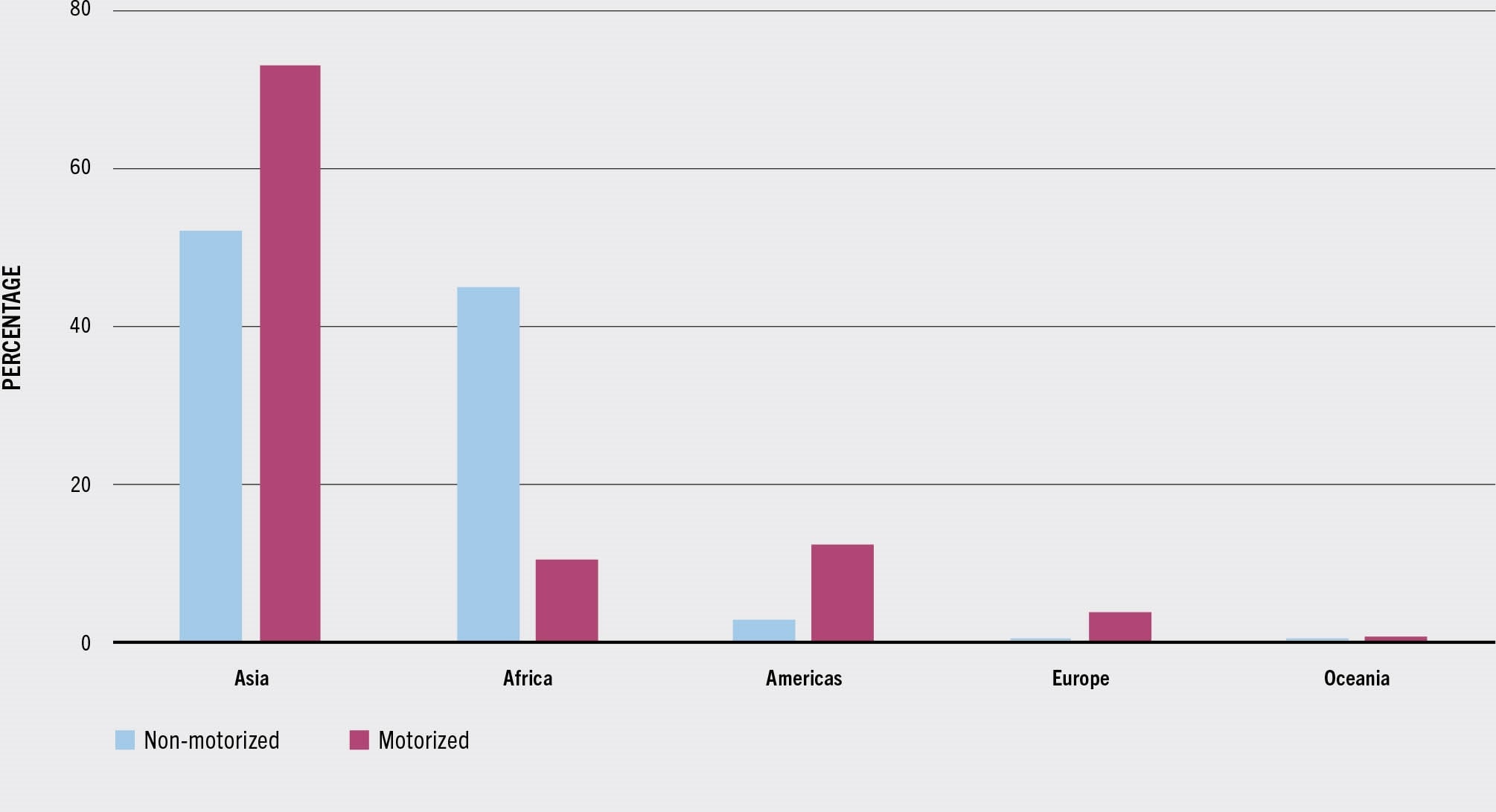
Size distribution of vessels and the importance of small boats
In 2020, around 81 percent of the world’s motorized fishing vessels with known length classification were in the LOA class of under 12 m, the majority of which were undecked. Figure 31 shows that small vessels represent the largest share of motorized vessels in all continents. In absolute terms, most of these small, motorized vessels were in Asia, followed by the Americas (particularly Latin American and the Caribbean) and Africa. Large vessels (with an LOA of 24 m or more and usually associated with over 100 gross tonnage) were estimated at about 45 000 units across the world, representing under 5 percent of the world’s motorized fishing vessels. The proportion of these large boats was highest in the Americas, Oceania and Asia in 2020. It is worth noting again that large vessels, though in small numbers, account for an estimated one-third of the total engine power of the global fishing fleet (Rousseau et al., 2019).
FIGURE 31SIZE DISTRIBUTION OF MOTORIZED FISHING VESSELS BY CONTINENT, 2020
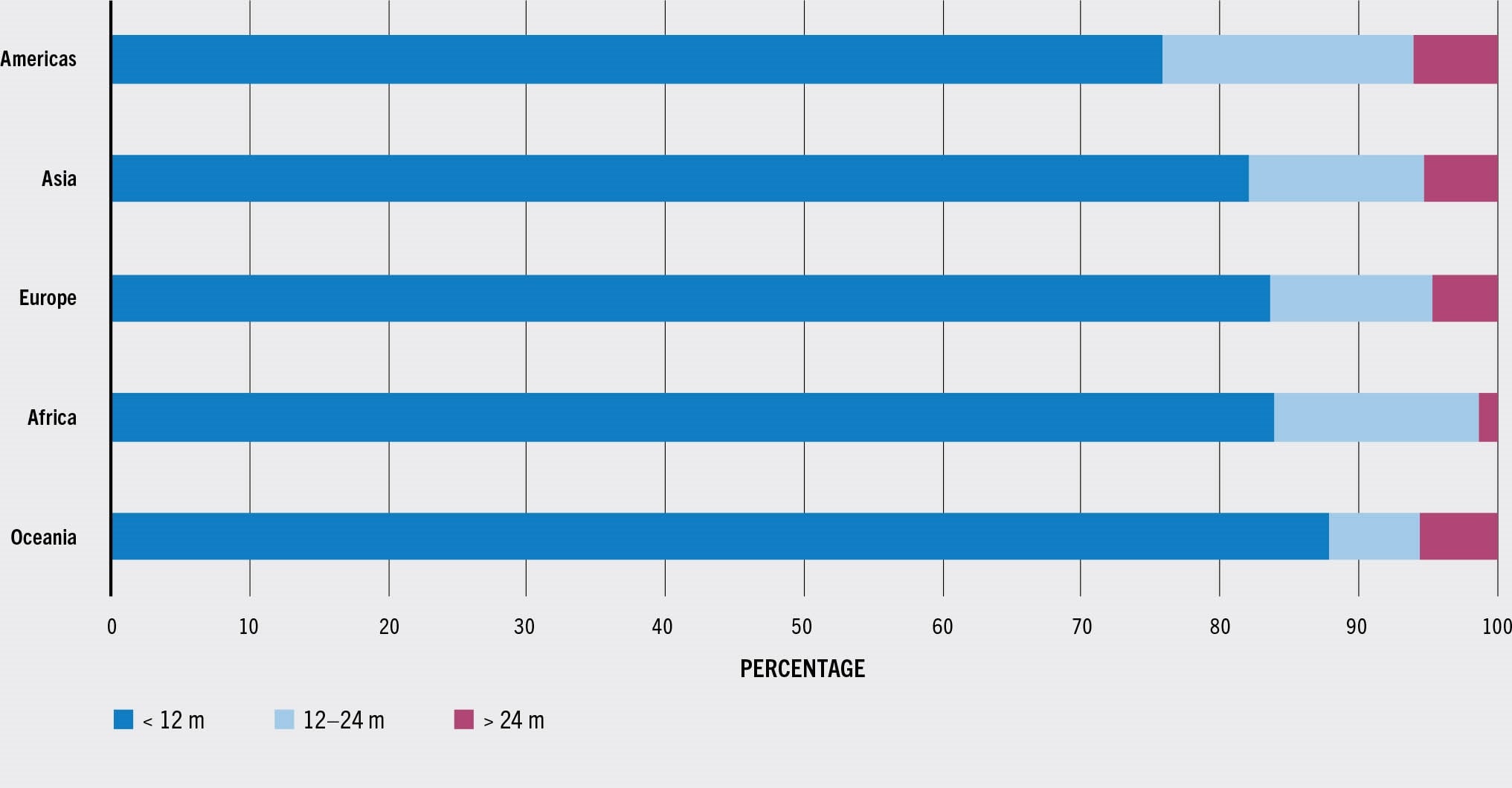
Figure 31 shows higher proportions of medium and large vessel sizes in 2020 compared with previous years, mostly in Africa, the Americas and Asia. These data confirm the results of the review reported in Box 5, which underlines general increases in tonnage and length observed in fleets around the world. In the case of the Americas, an important update of the data for Brazil – a key player on the continent – resulted in a fleet characterized by more large vessels than previously reported. This partly explains the fact that the Americas now have the world’s smallest proportion of motorized vessels under 12 m.
BOX 5GLOBAL FISHING FLEETS PERFORMANCE
FAO conducted a review of the techno-economic performance of the main global marine fishing fleets from 20 major fishing countries in Africa, Asia, Europe, North and South America.1 Financial, socio-economic and technical information was collected from 103 major fishing fleet segments, representing approximately 240 000 fishing vessels. Taken as a whole, these fleets were responsible for an estimated 39 percent of marine capture fisheries production worldwide during the period 2016–2019.
The analysis of vessel characteristics reveals that there are substantial differences between fleet segments in marine fishing capacity (in terms of vessel length, tonnage and power). Comparing 16 fleet segments that also featured in a previous review in 2000, an increase in the gross tonnage of individual average vessels in all of these fleet segments was visible. Moreover, substantial increases in overall average vessel length and engine power were observed in several Asian fishing fleets. The age structure of the fishing fleets of (semi-) industrial fishing vessels in North and South America, Africa and Europe generally demonstrates an upward trend, while the age profile of most fishing fleet segments in Asia is younger, owing to the rejuvenation of fishing fleets in China, Bangladesh, India and Indonesia.
An analysis of the costs and earnings data of 98 fleet segments showed that labour and running costs were the two main cost components. The highest costs and earnings were found among purse seiner and trawler fleet segments targeting pelagic species.
The review showed that investments in (semi-) industrial fishing vessels and fishing operations are generally profitable, and that marine capture fishing continues to be a financially viable economic activity in all 20 fishing nations included in the review. Most fishing fleets surveyed realized sufficient income to cover depreciation costs, interest and loan repayments, and provide necessary financial resources for reinvestment. Of the 97 mostly (semi-) industrial fleet segments, 92 percent reported a positive net cash flow in the years they were surveyed between 2016 and 2019. Net profit margins (NPM) of 10 percent or more were realized by average fishing vessels in 73 percent of the fleet segments, while 88 percent reported positive results in terms of capital productivity, as their returns on fixed tangible assets (ROFTA) were positive. Returns on investment (ROI) of 10 percent or higher were realized by 61 percent of the fleet segments.
Profitability varied between vessels, fleet segments and years.2 On average, purse seiners, gillnetters and squid jiggers presented very good results on the three major profitability indicators (NPM, ROFTA and ROI). Pelagic trawlers and large and medium-sized bottom trawlers also reported percentages that indicate profitable or highly profitable fishing operations. Four of the ten longliner fleet segments presented negative results, which affected the aggregated average performance of the grouped longliner segments.
The fishing technologies used continue to develop. Reducing fuel costs and saving energy have been key drivers for technological developments in semi-industrial fishing operations, vessels and gear. There have also been major developments in terms of increasing fishing efficiency, reducing the environmental impact of fishing, improving handling and enhancing product quality, in addition to improving safety at sea and the working conditions of fishers on board vessels. These developments – together with a general increase in prices of aquatic products, successful fisheries management in some areas, and improved fleet capacity management in Europe and North America – have all contributed to the positive financial and economic performance of the main global fishing fleets in recent years, before the COVID-19 pandemic.
- 1 Van Anrooy, R., Carvalho, N., Kitts, A., Mukherjee, R., Van Eijs, S., Japp, D. & Ndao, S. 2021. Review of the techno-economic performance of the main global fishing fleets. FAO Fisheries and Aquaculture Technical Paper No. 654. Rome, FAO. https://doi.org/10.4060/cb4900en
- 2 For the aggregated average performance of fishing fleet segments, grouped by gear type and vessel size (for bottom trawlers) in the years surveyed, see table available at: www.fao.org/3/cb4900en/cb4900en.pdf#page=85
Table 11 summarizes the number of vessels by LOA class and motorization status for a selection of countries that highlight regional trends. The selected countries follow the global trend identified earlier with most vessels being smaller LOA; most non-powered vessels are in Asian and African countries, and only 8 of the 27 countries and territories shown in Table 11 have 200 or more vessels over 24 m LOA. Non-motorized vessels only represent a major component of the fleet in Benin and Malawi and – to a lesser extent – in Angola, Bangladesh, Sri Lanka and Tunisia, where they account for around 50 percent of the total.
TABLE 11REPORTED NUMBER OF VESSELS BY MOTORIZATION AND LOA CLASS IN FISHING FLEETS FROM SELECTED COUNTRIES AND TERRITORIES, 2020

While small vessels make up most of the world’s fleets, the estimation of their numbers is particularly challenging. Indeed, while industrial vessels are usually subject to licensing and registration requirements, this is less often the case for small vessels. Additionally, small vessels may not always be reported in national statistics even when registries exist. Another challenge has to do with inland water fleets, for which reporting and data availability in local and national registries is rarely adequate, complicating further disaggregation and comparison between marine and inland water fleets. This highlights the need for FAO to accelerate its efforts to improve data quality and reporting in fisheries, with a major focus on small-scale fisheries around the world, also through dedicated capacity-building activities in fisheries statistics. Indeed, information on vessels (best collected through registries) is critical for countries because it allows them to assess the size of their fleets, supports fisheries management and constitutes a critical first step in recognizing and formalizing small-scale fishery activities and their actors.
The comprehensive revision conducted during the past few years by FAO has improved the FAO fleet data for the period 1995–2020, enabling adjustments in national and regional totals compared with previous issues of The State of World Fisheries and Aquaculture. It has also enabled the development and presentation of more than 20 years of historical data in more detailed form, by closely communicating with Members to revise historical data, uncover new data sources, control data errors and make imputations where necessary. This work on improving data collection and analysis will be expanded to include the historical data from 1950 to 1995.


